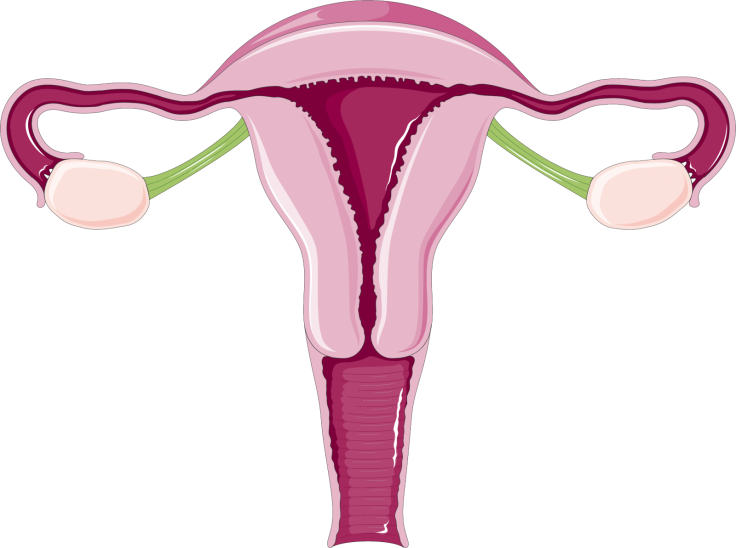Why do women have periods? Everything you need to know about menstruation.
Humans are among a select few species that menstruate.

Menstruation is the process where an unfertilised egg, or a fertilised egg that has not become embedded in the uterus lining, is removed from the body via blood flow through the vagina.
Humans are very rare among species in having the trait of menstruation, as most animals do not bleed on a regular basis to remove the uterus lining and unfertilised egg or underdeveloped embryo. Only humans, monkeys, apes and free-tailed and leaf-nosed bats, and elephant shrews menstruate. In most animals, the uterus lining is reabsorbed into the body if a female does not become pregnant after releasing an egg from the ovary.
Why does the uterus lining grow so thick?
The uterus lining is removed externally in humans because it grows particularly thick each month, leading up to the time when women are most fertile. The lining – or endometrium – grows thick in order to make it difficult for an egg to attach. It's thought that this occurs to allow only the strongest and healthiest eggs to attach.
Why does the endometrium have to be lost?
The loss of the endometrium is thought to be a strategy developed by females in an evolutionary tug of war with their foetuses. The foetus benefits if it gets as much nutrients from its mother as it can. The mother, however, needs to retain some nutrients for herself and any other offspring. So the fertilised egg burrows deep into the endometrium to gain access to the mother's bloodstream. This in turn, encourages an evolutionary response from the mother: to make it harder for the fertilised egg to do this by making the endometrium as thick as possible. By making things difficult for the fertilised egg, it also helps ensure that genetically weak or disease-prone eggs are less likely to attach. This could pose a risk to the mother if the egg died during gestation, or would be more likely to be an evolutionary waste of resources if it died shortly after birth.

Why doesn't menstruation happen in all animals?
In most animals, either the endometrium is reabsorbed back into the body rather than being expelled through bleeding, or it only grows thick in response to a fertilised egg binding to the lining. This is partly because most other mammals have a different physiological relationship with their foetuses. Many mammals are able to spontaneously abort the foetus and reabsorb it into the body partway through pregnancy, if necessary – for example, if the animal is under a lot of stress – making it less crucial to ensure that only healthy and strong fertilised eggs attach.
What makes the endometrium grow thick each month?
The hormone oestrogen encourages the growth of the endometrium in days 0-14 of the menstrual cycle, and it continues to grow up until menstruation. Just before a woman's period, the endometrium can be 10-16mm thick.
Why are periods so painful?
The way that the endometrium is lost involves contractions of the uterus to loosen the lining and allow it to be lost through the vagina. Many women only experience mild symptoms or no symptoms at all, but for some, these cramps can be incredibly painful and debilitating. Other issues associated with periods include back pain, joint and muscle aches, breast soreness and headaches.

Are period pains genetic?
The symptoms of premenstrual syndrome, or PMS, include painful abdominal cramps, headaches, bloatedness or diarrhoea, muscle soreness, joint pain, lower back pain, tiredness and irritability. Some women have such extreme PMS that they suffer from depression or anxiety. These extreme cases are called premenstrual mood disorder, or PMDD. A study has recently found that PMDD is linked to a gene cluster called ESC/E(Z), according to a study in the journal Molecular Psychiatry. The finding opens up possibilities for evidence-based treatments for PMDD, which have so far been lacking.
How long does a period usually last?
Periods typically last between three and seven days, and happen around every 28 days. This can be affected if a woman takes hormonal contraception. Several forms of hormonal contraception can reduce bleeding or prevent periods entirely. This is only temporary while the woman continues taking the hormonal contraception and her fertility returns to normal once she stops taking them, provided she has not passed the menopause.

Why do women stop having periods?
Women can go through times after puberty when they do not menstruate. If a woman is underweight or malnourished, her body may save resources by halting menstruation. If this happens for more than three months, it is called amenorrhea. Women may also stop menstruating temporarily if they are taking certain kinds of hormonal contraception, such as the combined oral contraceptive pill, the 'mini pill', the implant or the intrauterine device. Women also stop having periods permanently during and after the menopause, which usually happens between the ages of 45 and 55, with an average age for the menopause of 51 in the UK.
Why do women have the menopause?
This has been a scientific puzzle for many years, but now scientists believe that the menopause happens in order to reduce competition for resources between mothers and daughters. Evolutionarily, if both mothers and daughters have offspring at the same time, there may not be enough food to go around, for example. In addition, older mothers have more interest in helping to raise other females' children in the group than younger mothers do, as they are more genetically related to the rest of the group, according to a study published in the journal Current Biology.
© Copyright IBTimes 2025. All rights reserved.






















